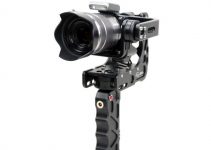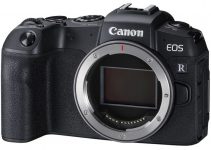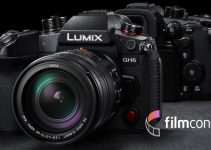What a better way to test your digital camera capabilities than pushing it to the limit and putting it under strain in some of the worst high-contrast lighting conditions. The quick side-by-side comparison below shows just that – some of the obvious differences between the Alexa Mini and URSA Mini 4.6 you might come across when shooting in such challenging conditions.
It’s worth noting that both cameras were recording Raw at their maximum resolution as well as no additional light sources were used on this particular occasion, except for the single practical fluorescent lamp seen in the frame.
Two lenses were involved in the test – the Tokina 16-28 T3.0 PL and Tokina 50-135 T3.0 PL. Again, don’t make any final conclusions based on this particular (or any other) camera test and always try to evaluate certain camera capabilities on your own as there are multiple factors that may vary drastically throughout different tests.
Alexa mini Open Gate 3.4K RAW and Blackmagic Ursa mini 4.6K RAW in Extreme Contrast from Sittipong Kongtong on Vimeo.
Honestly, I’m a bit surprised by the way the URSA Mini 4.6K managed to pull this off. Even it was shooting in Raw the captured highlights are completely blown out and when you add the color shift in the highlights the image looks even worse. I’m not sure whether the URSA Mini footage was way overexposed or the white balance is a bit off but the image is far from what I’ve initially expected to see.
The good news is that the creators of this test shared all the raw media from both cameras, so you can download it using the links below and play around with the footage on your own.
The Alexa Mini Raw, on the other hand, tend to produce more balanced and neutral look straight out of the box and I’m quite sure that you can retain some decent amount of detail in the highlights as well. Considering the fact that both cameras provides 14+ stops of dynamic range and shoots Raw, this task shouldn’t be a serious challenge.
Regardless of the outcome, at least we know wURSAhat to expect from those cameras when filming in similar extreme lighting conditions. Even though the settings are the same, the URSA footage is definitely overexposed if you compare the darker regions of the shots to the Alexa footage, whereas the URSA highlights are indeed very blown out as well as the shadows are much brighter.
If you need more in-depth side-by-side comparison check out the Jay P. Morgan and Kenneth Merrill video below that partially could explain some of the results of the previous test and in particular the obvious color shift in the URSA Mini footage.
All in all, Blackmagic Design has come a long way with their cameras as the fact that a $6,000 URSA Mini camera stacks up so well against the golden digital standard the Arri Alexa while yielding comparable results is a serious achievement on its own.
After all, knowing the strengths and weaknesses of your camera can help tremendously in a wide variety of shooting situations, or at least could be a great learning experience, especially when you compare it to the best.
Here are the link to original RAW files of Alexa mini 3.4K and Blackmagic URSA mini 4.6K RAW;
drive.google.com/open?id=0BybqOH9qai05ZGpuX3RTSExKWG8
drive.google.com/open?id=0BybqOH9qai05VDhrVDJkVHRUejg
drive.google.com/open?id=0BybqOH9qai05MDdyNllEMGdrRGM
[via: Cinescopophilia, source: Sittipong Kongtong]
B&H Links:
URSA Mini 4.6K Digital Cinema Camera (EF-Mount)
URSA Mini 4.6K Digital Cinema Camera (PL-Mount)
Tokina Cinema 50-135mm T3.0 with PL Mount
Tokina Cinema ATX 16-28mm T3 Wide-Angle Zoom Lens for PL
Disclaimer: As an Amazon Associate partner and participant in B&H and other affiliate programmes, we earn a small comission from each purchase made through the affiliate links listed above at no additional cost to you.




